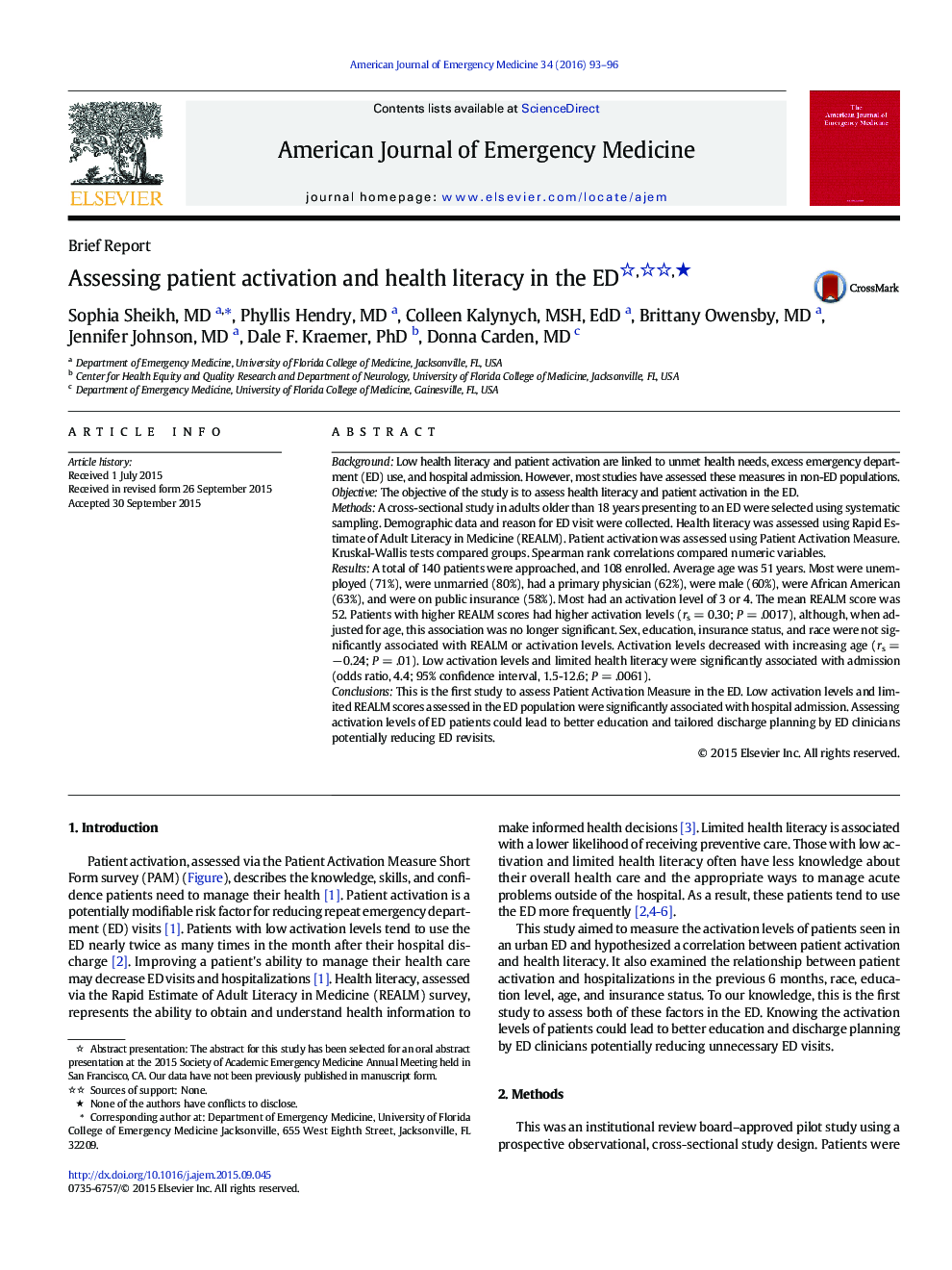| Article ID | Journal | Published Year | Pages | File Type |
|---|---|---|---|---|
| 3223426 | The American Journal of Emergency Medicine | 2016 | 4 Pages |
BackgroundLow health literacy and patient activation are linked to unmet health needs, excess emergency department (ED) use, and hospital admission. However, most studies have assessed these measures in non-ED populations.ObjectiveThe objective of the study is to assess health literacy and patient activation in the ED.MethodsA cross-sectional study in adults older than 18 years presenting to an ED were selected using systematic sampling. Demographic data and reason for ED visit were collected. Health literacy was assessed using Rapid Estimate of Adult Literacy in Medicine (REALM). Patient activation was assessed using Patient Activation Measure. Kruskal-Wallis tests compared groups. Spearman rank correlations compared numeric variables.ResultsA total of 140 patients were approached, and 108 enrolled. Average age was 51 years. Most were unemployed (71%), were unmarried (80%), had a primary physician (62%), were male (60%), were African American (63%), and were on public insurance (58%). Most had an activation level of 3 or 4. The mean REALM score was 52. Patients with higher REALM scores had higher activation levels (rs = 0.30; P = .0017), although, when adjusted for age, this association was no longer significant. Sex, education, insurance status, and race were not significantly associated with REALM or activation levels. Activation levels decreased with increasing age (rs = − 0.24; P = .01). Low activation levels and limited health literacy were significantly associated with admission (odds ratio, 4.4; 95% confidence interval, 1.5-12.6; P = .0061).ConclusionsThis is the first study to assess Patient Activation Measure in the ED. Low activation levels and limited REALM scores assessed in the ED population were significantly associated with hospital admission. Assessing activation levels of ED patients could lead to better education and tailored discharge planning by ED clinicians potentially reducing ED revisits.
